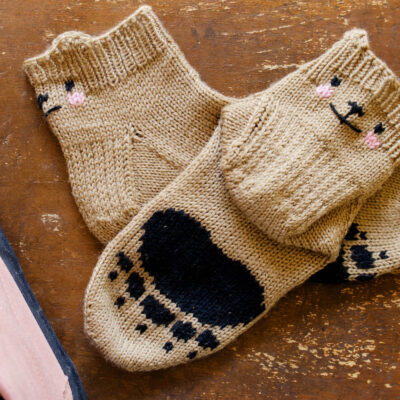Overview: This pocket method will work well for nearly all kinds of garments! It was designed to be added at any point in the knitted fabric so it doesn’t disrupt the pattern. It is entirely seamless and worked at the same time as the body of the work. No extra work at the end of the knitting! The only circumstances that I could image that it wouldn’t work in would be a lace pattern with migrating stitches or stranded color work. Standard lace, textured stitches, and cables would not be problematic at all. It can be worked from the top down or bottom up. I hope you love this pocket as much as I do!
Please feel free to use this pocket for personal or design use. If you do use it for a pattern, please give me due credit somewhere in the pattern. Homies deserve recognish.
See the tutorial video at:
Tools: Circular needles for the gauge called for in the pattern, 1 double-point needle for the gauge called for in the pattern, and 2 double-point needles 4 sizes smaller than the gauge needles.
Instructions
– Calculate desired pocket size: Multiply the desired pocket width by the stitches per inch.
– Using the main gauge circular needle and on a right-side row, work in pattern to the place you want your pocket.
– On the smaller needles, Turkish cast on the desired number of stitches (you will have 2x the number of stitches desired between the 2 needles).
– With main gauge double-point needles, K the 2nd double-point needle’s stitches. Place marker.
– In the gap between the cast-on stitches and the remaining stitches of the row/round, pick up 1 stitch and knit it together (using the main gauge circular needle) with the next stitch of the main gauge circular needle.
– Work in pattern on main circular needle to the end of the row/round.
Next row for turned rows
– With the main gauge circular needle, work in pattern to the pocket marker.
– Purl all the main gauge double-point needle stitches using the main gauge circular needle.
– Pull a length of the cable through so you can turn the pocket to work the next double-point needle.
– Purl all the smaller double-point needle stitches using the main gauge circular needle. Place marker.
– Work in pattern to the end of the row.
Next row for in-the-round
– With the main gauge circular needle, work in pattern to the beginning of the cast on stitches. Place marker.
– Knit all the smaller double-point needle stitches using the main gauge circular needle.
– Pull a length of the cable through so you can turn the pocket to work the next double-point needle.
– Knit all the main gauge double-point needle stitches using the main gauge circular needle. Slip marker.
– Work in pattern to the end of the round.
– Continue the body of the work as indicated in the pattern, keeping the pocket stitches in Stockinette stitch until the pocket reaches the desired length.
Close the pocket
– On a wrong-side row, work in pattern to the first pocket marker. Turn the pocket fabric to the wrong-side (inside) of the work.
– Knit or purl to the center of the pocket stitches (half the total pocket stitch number).
– Using the spare main gauge double-point needle, hold together the 2 main needles and bind off the pocket stitches in a 3-needle bind off until the last bind-off loop remains on the double-point needle. Remove the markers and place the last bind-off loop on the left-hand main gauge circular needle.
– Purl or knit together the last bind-off loop with the next stitch on the main gauge circular needle. The stitch count should be back to the original stitch called for in the pattern.
– Work in pattern to the end of the row/round.





